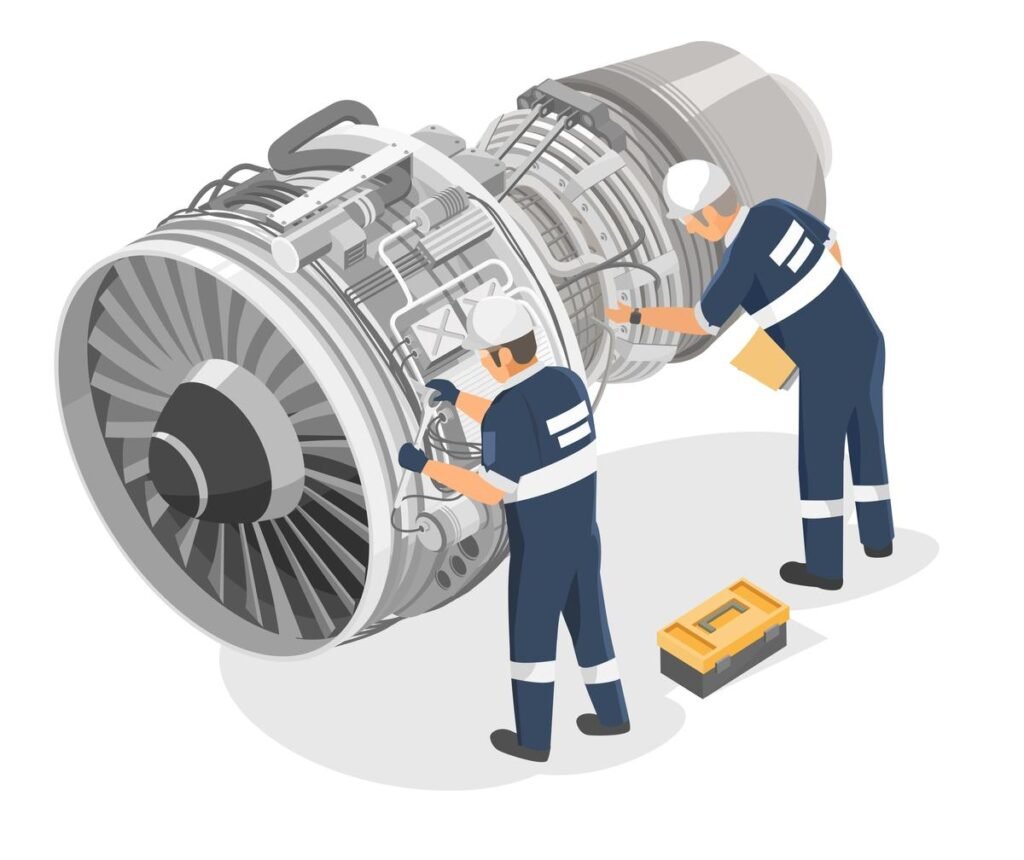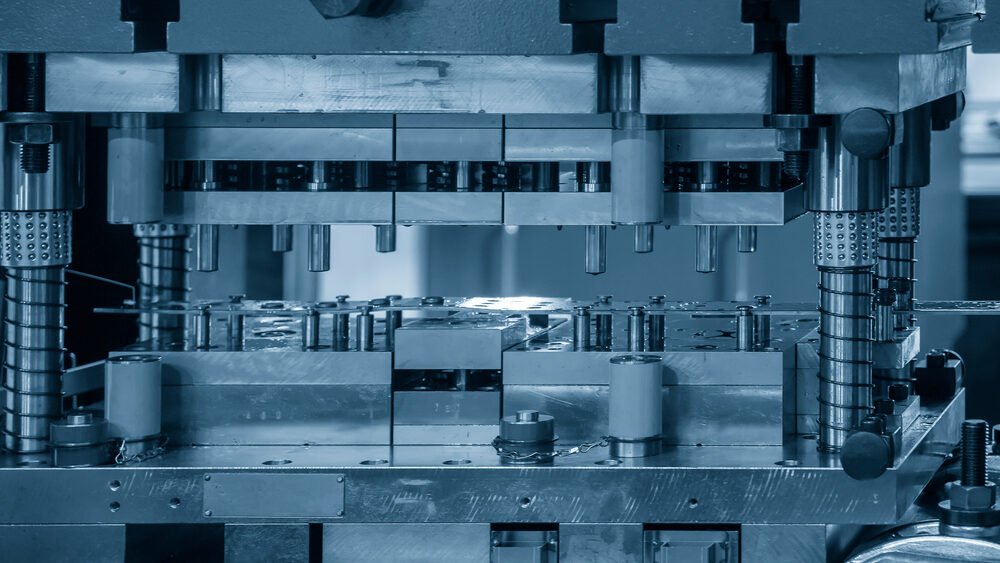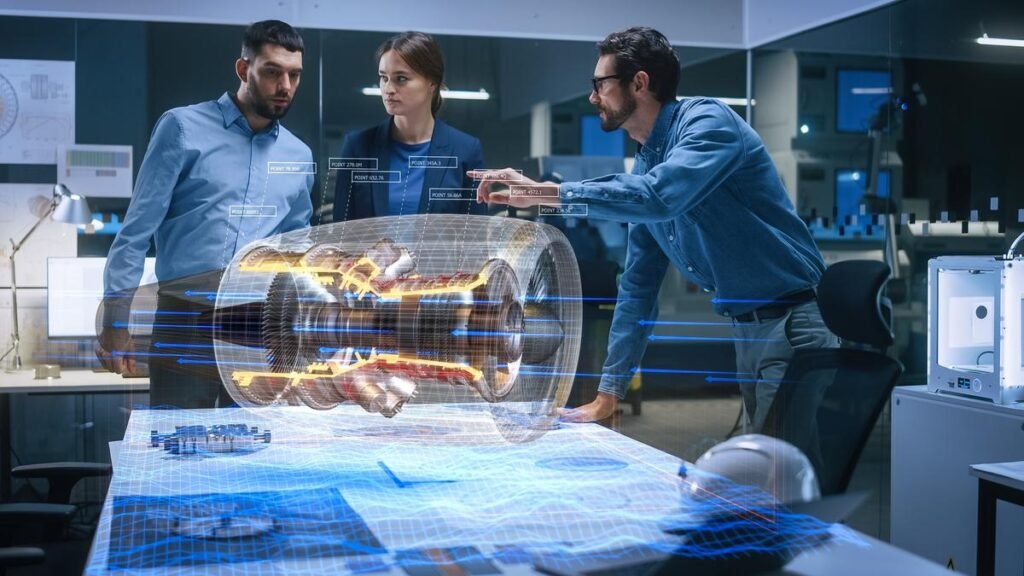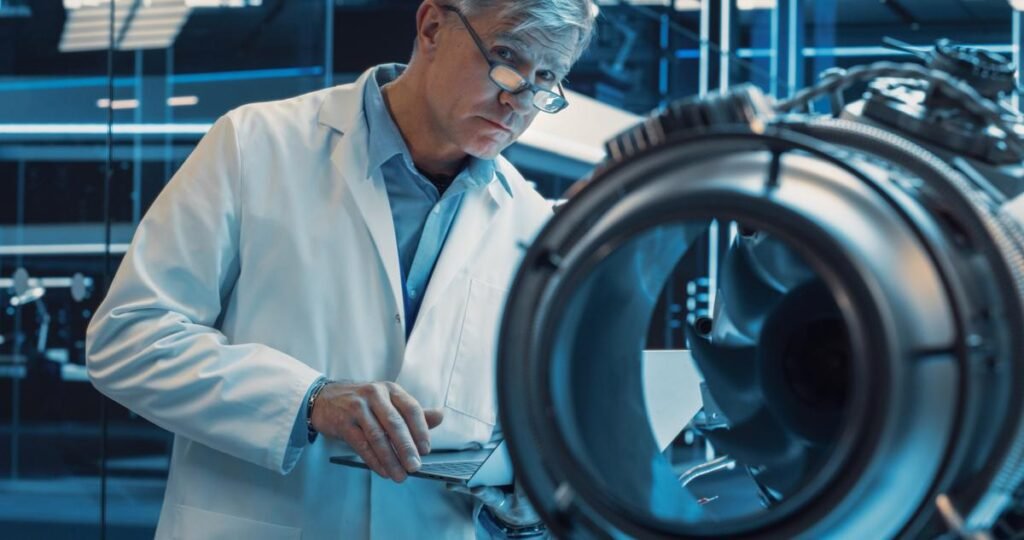In an era where technology is soaring to new heights, the aerospace industry stands as a testament to human ingenuity and innovation. As we venture further into the skies and beyond, the manufacturing of aerospace parts becomes a critical focal point, embodying precision, quality, and reliability. In this guide, we delve deep into the intricacies of aerospace parts manufacturing, shedding light on the technologies, materials, and standards that govern this high-stakes industry.
Aerospace parts manufacturing is a specialized sector that involves the production of various components used in aircraft and spacecraft. Utilizing advanced technologies and materials, manufacturers strive to create parts that meet stringent industry standards for safety and performance. From metal stamping to the use of superalloys, this sector is characterized by innovation and a relentless pursuit of excellence.
Join us as we navigate through the complex yet fascinating world of aerospace parts manufacturing. From understanding the pivotal role of metal stamping to exploring the future trends in the industry, this guide offers a comprehensive insight into the realm of aerospace manufacturing. Whether you are an industry professional or an aviation enthusiast, this guide promises a rich and informative journey.

Explaining the Aerospace Parts Manufacturing Industry
In the dynamic world of aerospace, understanding the nuances of the industry is pivotal. This sector is characterized by high stakes, where precision, innovation, and reliability are not just desired but essential. Let’s delve deeper into the intricacies that define this industry.
Overview of the industry
The aerospace parts manufacturing industry is a multifaceted sector that encompasses the production of a wide array of components essential for aircraft and spacecraft. From the smallest screw to the large fuselage sections, every part is manufactured with the utmost precision to ensure safety and performance. This industry is a symbiosis of advanced technology and engineering expertise, where manufacturers collaborate closely with designers and engineers to bring conceptual designs to life. The sector is marked by stringent regulations and standards, ensuring that every part produced meets the highest levels of quality and reliability.
Key players and stakeholders
In the aerospace parts manufacturing industry, several key players and stakeholders drive innovation and excellence. These include:
- Original Equipment Manufacturers (OEMs): Companies like Boeing, Airbus, and Lockheed Martin, which are responsible for assembling the final aircraft or spacecraft.
- Tier 1 Suppliers: These are firms that supply major components directly to OEMs, such as engines, avionics, and landing gear systems.
- Tier 2 and Tier 3 Suppliers: These companies manufacture smaller components or provide specialized services to Tier 1 suppliers.
- Regulatory Bodies: Organizations like the Federal Aviation Administration (FAA) and the European Union Aviation Safety Agency (EASA), which oversee safety and regulatory compliance in the industry.
- Research and Development Institutions: Entities that focus on research and innovation, working towards the development of new technologies and materials.
The role of innovation and technology
Innovation and technology stand as the backbone of the aerospace parts manufacturing industry. As the industry strives to create safer, more efficient, and environmentally friendly aircraft, the role of technological advancements becomes paramount. Innovations in materials science, such as the development of lightweight composites and superalloys, have revolutionized the manufacturing process. Moreover, the integration of artificial intelligence and data analytics facilitates predictive maintenance and real-time monitoring, enhancing safety and operational efficiency. As we move forward, the continuous evolution of technology promises to usher in a new era of aerospace manufacturing, characterized by sustainability, efficiency, and unprecedented levels of safety.
This section aims to provide readers with a comprehensive understanding of the aerospace parts manufacturing industry, highlighting the key players and the pivotal role of innovation and technology in shaping the sector’s future.

What Technologies Do We Use in Aerospace Parts Manufacturing?
The aerospace industry is at the forefront of technological innovation, utilizing a range of advanced manufacturing techniques to create components that meet stringent safety and performance standards. Here, we explore some of the pivotal technologies that are shaping the future of aerospace parts manufacturing.
Metal Stamping
Metal stamping is a manufacturing process where metal sheets are shaped into specific forms using dies and presses. In the aerospace industry, this technology is vital for creating high-precision components such as brackets, panels, and other structural elements. The process is known for its cost-effectiveness, especially in large-scale production, and the ability to maintain consistency and precision across numerous parts. Innovations in stamping technology have led to the development of progressive dies, which can perform multiple operations in a single pass, further enhancing efficiency and precision.
CNC Machining
CNC (Computer Numerical Control) machining is a subtractive manufacturing process where material is removed from a workpiece using various cutting tools controlled by a computer. In aerospace, CNC machining is used to create complex parts with high precision, such as turbine blades, engine components, and instrumentation panels. The technology allows for the production of components with intricate geometries and tight tolerances, which are essential characteristics in aerospace parts manufacturing.
Additive Manufacturing (3D Printing)
Additive manufacturing, commonly known as 3D printing, is a revolutionary technology that builds parts layer by layer from digital models. In the aerospace sector, this technology is utilized for creating complex components that would be difficult or even impossible to manufacture using traditional methods. It allows for the production of lightweight, yet strong parts, with a high degree of customization. Moreover, 3D printing facilitates rapid prototyping, enabling quicker design iterations and reducing time-to-market.
Composite Material Fabrication
Composite materials, consisting of two or more different materials combined to enhance their properties, have found extensive use in aerospace manufacturing. These materials, such as carbon-fiber-reinforced polymers, offer superior strength-to-weight ratios compared to traditional materials. The fabrication process involves layering composite materials and curing them to form a unified structure. This technology is pivotal in creating parts that are lightweight yet extremely durable, contributing to the development of fuel-efficient and high-performance aircraft.
These technologies, with their unique capabilities and advancements, are steering the aerospace parts manufacturing industry towards a future marked by efficiency, innovation, and unparalleled safety standards.

The Importance of Metal Stamping in Aerospace Parts Manufacturing
In the aerospace industry, where the margin for error is virtually non-existent, the role of metal stamping cannot be overstated. This manufacturing process stands as a cornerstone in the production of aerospace components, offering a blend of precision, cost-effectiveness, and versatility. Let’s delve deeper into why metal stamping is deemed so vital in aerospace parts manufacturing.
Precision and Consistency
Metal stamping is renowned for its ability to produce parts with high precision and consistency. The process utilizes specially designed dies that ensure each component manufactured is identical to the last, maintaining uniformity across large production batches. This level of precision is critical in the aerospace industry, where even the slightest deviation can have significant implications on the safety and performance of an aircraft. Moreover, the consistency afforded by metal stamping helps in streamlining the assembly process, as manufacturers can rely on the uniform quality of the components.
Cost-effectiveness for Large-scale Production
When it comes to large-scale production, metal stamping stands as a cost-effective solution. The initial investment in designing and creating the dies is quickly offset by the reduced unit costs over high-volume production runs. This cost-effectiveness is particularly beneficial in the aerospace industry, where the demand for high-quality components is substantial. By optimizing production costs without compromising on quality, metal stamping contributes to the overall affordability of aerospace manufacturing, making air travel more accessible to the masses.
Versatility in Forming Complex Parts
Metal stamping offers remarkable versatility in forming complex parts. The technology can handle a wide range of metal forming techniques, including deep drawing, bending, and flanging, allowing for the creation of components with intricate geometries and varying thicknesses. This versatility is essential in aerospace manufacturing, where parts often require complex shapes and structures to fulfill specific functions. Moreover, advancements in stamping technology have enabled the production of parts with higher complexity, further expanding the scope of applications in the aerospace sector.
Metal stamping, with its blend of precision, cost-effectiveness, and versatility, stands as a pivotal technology in aerospace parts manufacturing. Its ability to meet the stringent demands of the aerospace industry makes it an indispensable tool in the production of safe, reliable, and high-performance aircraft.

What Is the Future of Aerospace Parts Manufacturing?
As we venture further into the 21st century, the aerospace industry stands on the cusp of a new era marked by innovation and sustainability. The relentless pursuit of excellence and efficiency is steering the sector towards groundbreaking advancements. Here, we explore the potential trajectories that delineate the future of aerospace parts manufacturing.
New-generation, Lightweight Parts
The future of aerospace manufacturing is intrinsically linked to the development of new-generation, lightweight parts. The industry is increasingly focusing on materials and manufacturing techniques that can produce components with superior strength-to-weight ratios. The integration of composite materials and additive manufacturing is facilitating the creation of lightweight structures that do not compromise on strength and durability. These advancements are pivotal in enhancing the performance and fuel efficiency of aircraft, paving the way for a new generation of agile and efficient flying machines.
Fuel-efficient Aircraft
The drive towards more fuel-efficient aircraft is a defining trend in the aerospace industry. Manufacturers are exploring various avenues to achieve this goal, including aerodynamic design optimizations, the integration of more efficient engines, and the utilization of lightweight materials. The development of fuel-efficient aircraft is not just an economic imperative but also a step towards reducing the environmental footprint of aviation, aligning with global efforts to mitigate climate change.
Integration with Artificial Intelligence and Robotics
The aerospace manufacturing sector is increasingly embracing the integration of artificial intelligence (AI) and robotics. AI facilitates predictive maintenance, real-time monitoring, and data analytics, enhancing the efficiency and safety of aerospace operations. Simultaneously, robotics is revolutionizing the manufacturing process, allowing for more precise and automated production lines. The synergy of AI and robotics promises to usher in a new era of aerospace manufacturing characterized by innovation, efficiency, and unprecedented levels of safety.
Sustainable and Green Manufacturing Practices
As the world grapples with the challenges of climate change, the aerospace industry is making concerted efforts to adopt sustainable and green manufacturing practices. This includes the exploration of alternative fuels, the implementation of energy-efficient manufacturing processes, and the development of aircraft with lower emissions. The industry is also focusing on recycling and reusing materials, minimizing waste, and reducing its environmental impact. These initiatives are a testament to the industry’s commitment to being a responsible steward of the environment, working towards a greener and more sustainable future.
The future of aerospace parts manufacturing is a landscape of innovation and responsibility, where the industry seeks to harmonize technological advancements with environmental stewardship. As we look forward to the coming decades, the aerospace sector promises to be a beacon of progress, steering humanity towards a future of safer, more efficient, and sustainable air travel.

Different Aerospace Parts that Can Be Stamped
Metal stamping stands as a cornerstone in the aerospace manufacturing sector, offering a versatile solution for the production of various critical components. The process is favored for its ability to maintain high precision and consistency across large production batches. Here, we delve into the different aerospace parts that can be crafted using this vital manufacturing technique.
Structural Components
Metal stamping is extensively used in the fabrication of structural components that form the backbone of aircraft and spacecraft. These include:
- Fuselage Panels: The main body of the aircraft, where stamping is used to create panels with complex geometries and high strength-to-weight ratios.
- Wing Ribs and Spars: Critical components that form the structure of the wings, requiring high precision and consistency in manufacturing.
- Landing Gear Components: Parts like struts and braces, which need to be robust and durable, are often crafted using metal stamping techniques.
Engine Components
The engine is the heart of any aircraft, and metal stamping plays a pivotal role in the production of various engine components, such as:
- Turbine Blades: These are crafted with high precision to ensure optimal performance and efficiency.
- Combustion Chambers: Stamping is used to create chambers with complex designs that can withstand high temperatures and pressures.
- Exhaust Nozzles: These components require precision manufacturing to ensure proper exhaust flow and engine performance.
Instrumentation and Control Panels
Metal stamping is also utilized in the creation of instrumentation and control panels, which are vital for the operation of the aircraft. These include:
- Dashboard Panels: Where various instruments and controls are housed, requiring intricate designs and high precision.
- Switches and Buttons: These are manufactured with tight tolerances to ensure reliable operation over extended periods.
- Connector Components: Stamping is used to create connectors that facilitate the integration of various systems within the aircraft.
Additional Components
Apart from the above, metal stamping is also used in the manufacturing of various other components, including:
- Seat Frames: To ensure passenger comfort and safety.
- Cargo Hold Components: For secure and efficient storage of cargo.
- Airframe Parts: Including various brackets, mounts, and supports that contribute to the overall structural integrity of the aircraft.
Metal stamping, with its versatility and precision, facilitates the production of a wide array of aerospace components, contributing significantly to the industry’s advancements and success.

Standards and Requirements of Aerospace Parts Stamping
In the aerospace industry, the manufacturing processes are governed by stringent standards and requirements to ensure the utmost safety and reliability of the components. Metal stamping, being a vital process in the production of various aerospace parts, is no exception. Here, we explore the critical standards and requirements that govern aerospace parts stamping.
Industry Standards and Certifications
The aerospace industry operates under a set of well-defined standards and certifications that dictate the quality and safety parameters for manufacturing processes, including metal stamping. These standards are established by international organizations and regulatory bodies to ensure uniformity and reliability across the industry. Some of the prominent standards and certifications include:
- AS9100: A widely recognized quality management system in the aerospace industry, focusing on quality assurance in design, development, and production.
- NADCAP (National Aerospace and Defense Contractors Accreditation Program): A global cooperative program that defines standards for manufacturing processes, including metal stamping.
- ISO 9001: An international standard that sets criteria for quality management systems, emphasizing continuous improvement and customer satisfaction.
- FAA (Federal Aviation Administration) Certifications: These are necessary for manufacturers to comply with the safety regulations and standards set by the FAA.
Quality Control and Assurance
Quality control and assurance are pivotal aspects of aerospace parts stamping. Manufacturers employ various techniques and methodologies to ensure the quality of the stamped parts. These include:
- Precision Measurement: Utilizing advanced measurement tools to ensure the dimensions and tolerances of the stamped parts meet the specified criteria.
- Material Testing: Conducting tests to verify the properties and quality of the materials used in the stamping process.
- Process Monitoring: Implementing real-time monitoring of the stamping process to identify and rectify any deviations or anomalies promptly.
- Documentation and Traceability: Maintaining detailed records of the manufacturing process to ensure traceability and compliance with industry standards.
Safety and Reliability Considerations
Safety and reliability are paramount in the aerospace industry. When it comes to parts stamping, several considerations are taken into account to ensure the safety and reliability of the components, including:
- Design Optimization: Employing advanced design techniques to enhance the safety features of the stamped parts.
- Fatigue Analysis: Conducting analyses to assess the fatigue life of the components, ensuring they can withstand the rigors of aerospace operations.
- Failure Mode and Effects Analysis (FMEA): A systematic approach to identifying potential failure modes and implementing corrective measures to mitigate risks.
- Environmental Compliance: Ensuring that the manufacturing process complies with environmental regulations, minimizing the ecological impact.
Adhering to the stringent standards and requirements of aerospace parts stamping is not just a regulatory mandate but a commitment to safety, quality, and excellence. These guidelines serve as the foundation upon which the aerospace industry builds reliable, efficient, and safe flying machines.

Which Materials Can We Use for Aerospace Parts Stamping?
The selection of materials is a critical aspect in aerospace parts manufacturing, influencing the performance, safety, and durability of the components. Metal stamping, as a versatile manufacturing process, can handle a variety of materials, each offering unique properties and benefits. Here, we explore the different materials that are commonly used in aerospace parts stamping.
Steel
Steel, known for its strength and durability, is a popular choice in aerospace manufacturing. Different grades of steel, including stainless steel, are used to create components that require high tensile strength and resistance to corrosion. Steel is often used in the manufacturing of structural components, landing gear, and engine parts due to its ability to withstand high stresses and harsh environments.
Aluminum
Aluminum stands as a preferred material in the aerospace industry due to its lightweight properties coupled with good strength. It is extensively used in the fabrication of airframes, fuselage structures, and wing components. Aluminum alloys, which combine aluminum with other elements, offer enhanced properties, making them suitable for various aerospace applications. The material is known for its excellent corrosion resistance and high thermal conductivity.
Titanium
Titanium is revered in the aerospace sector for its high strength-to-weight ratio and excellent corrosion resistance. It finds extensive application in engine components, fasteners, and landing gear parts. Titanium’s ability to withstand high temperatures and resist corrosion makes it a preferred choice for components exposed to extreme environments.
Tungsten
Tungsten, characterized by its high density and melting point, is used in aerospace applications where high temperature resistance and durability are required. It is often used in the manufacturing of engine components and as a balancing weight in aircraft structures. Tungsten alloys, which combine tungsten with other elements, offer enhanced properties suitable for specific aerospace applications.
Superalloys
Superalloys are a group of materials known for their excellent mechanical strength, resistance to thermal creep deformation, and good surface stability. These materials are commonly used in the manufacturing of turbine blades, combustion chambers, and other engine components where they are subjected to high temperatures and pressures.
Composites
Composite materials, consisting of two or more different materials combined to enhance their properties, have found extensive use in aerospace manufacturing. These materials, such as carbon-fiber-reinforced polymers, offer superior strength-to-weight ratios compared to traditional materials. The fabrication process involves layering composite materials and curing them to form a unified structure. This technology is pivotal in creating parts that are lightweight yet extremely durable, contributing to the development of fuel-efficient and high-performance aircraft.
The choice of materials in aerospace parts stamping is a critical consideration, influencing the performance, safety, and efficiency of the components. By selecting the appropriate material, manufacturers can create parts that meet the stringent demands of the aerospace industry, paving the way for safer and more efficient air travel.

What Are the Biggest Challenges of Manufacturing Aerospace Parts?
The aerospace industry, characterized by its relentless pursuit of innovation and excellence, faces a myriad of challenges in manufacturing parts that meet the stringent standards of safety, reliability, and performance. From adhering to industry norms to adapting to technological advancements, manufacturers grapple with various hurdles. Here, we delve into the significant challenges encountered in the manufacturing of aerospace parts.
Meeting Stringent Industry Standards
One of the foremost challenges in aerospace manufacturing is complying with the stringent industry standards that govern the production of components. These standards, established by international regulatory bodies, dictate the quality, safety, and performance parameters that aerospace parts must meet. Manufacturers are required to adhere to these norms rigorously, necessitating meticulous planning, quality control, and documentation. The challenge lies in maintaining the highest levels of quality while also striving for efficiency and cost-effectiveness in the production process.
Material Sourcing and Sustainability
The aerospace industry relies heavily on specialized materials that offer unique properties suitable for various applications. The challenge of material sourcing is twofold: ensuring a steady supply of high-quality materials and adopting sustainable practices in material procurement. Manufacturers are increasingly focusing on sourcing materials that are environmentally friendly and sustainable, aligning with the global push towards greener manufacturing practices. This necessitates a reevaluation of supply chains and fostering collaborations with suppliers who adhere to sustainable practices.
Skilled Labor and Expertise
The manufacturing of aerospace parts requires a workforce with specialized skills and expertise. The industry faces a challenge in attracting and retaining skilled labor capable of handling the complex manufacturing processes involved in aerospace production. Moreover, the rapid advancements in technology necessitate continuous training and development programs to equip the workforce with the latest skills and knowledge. The challenge lies in fostering a culture of learning and innovation that can keep pace with the evolving demands of the industry.
Technological Advancements and Adaptation
The aerospace industry is at the forefront of technological advancements, with new innovations continually reshaping the landscape. Manufacturers face the challenge of adapting to these technological shifts, integrating new tools and techniques into their production processes. This includes embracing digitalization, artificial intelligence, and automation, which promise to revolutionize aerospace manufacturing. The challenge lies in navigating the transition smoothly, ensuring that the integration of new technologies enhances efficiency and productivity without compromising on quality and safety.
The manufacturing of aerospace parts is a complex endeavor, fraught with challenges that demand ingenuity, expertise, and a commitment to excellence. As the industry navigates these hurdles, it continues to push the boundaries of what is possible, steering humanity towards a future of safer, more efficient, and sustainable air travel.

Do All Aerospace Parts Manufacturers Have an MOQ?
In the aerospace industry, the concept of Minimum Order Quantity (MOQ) often comes into play, dictating the lowest quantity of a certain item that a supplier is willing to sell. While it is a common practice in various industries, the aerospace sector presents unique challenges and considerations when it comes to MOQ. Here, we explore the intricacies of MOQ in the aerospace industry and provide insights into negotiating MOQ with manufacturers.
Understanding MOQ in the Aerospace Industry
MOQ, or Minimum Order Quantity, is a standard practice in manufacturing, where suppliers stipulate the minimum number of units that can be ordered at one time. In the aerospace industry, MOQs are often influenced by various factors, including the complexity of the parts, material availability, and production costs. Understanding the nuances of MOQ in this sector is vital for both manufacturers and buyers to establish mutually beneficial agreements and ensure a smooth production process.
Factors Influencing MOQ
Several factors influence the determination of MOQ in the aerospace industry, including:
- Material Availability: The availability of specialized materials required for aerospace parts can influence the MOQ, with scarce or expensive materials often necessitating higher MOQs.
- Production Complexity: The complexity of the manufacturing process, especially for intricate aerospace components, can be a determining factor in setting the MOQ.
- Cost Considerations: Manufacturers often set MOQs based on cost considerations, aiming to achieve economies of scale that make the production process financially viable.
- Customization Requirements: Customized parts, which require specialized molds or tooling, may have higher MOQs compared to standard components.
How to Negotiate MOQ with Manufacturers
Negotiating MOQ with aerospace parts manufacturers requires a strategic approach, considering the unique challenges and requirements of the industry. Here are some tips for successful negotiation:
- Understanding Supplier Constraints: Gain insights into the supplier’s constraints and challenges, which can provide a basis for negotiation.
- Flexible Ordering: Explore options for flexible ordering, such as phased deliveries or consignment inventory, which can potentially lower the MOQ.
- Collaborative Partnerships: Establish collaborative partnerships with manufacturers, working together to find solutions that meet both parties’ needs.
- Volume Commitments: Consider making volume commitments over a longer period, which can sometimes persuade manufacturers to reduce the MOQ.
Navigating the complexities of MOQ in the aerospace industry requires a deep understanding of the sector’s unique dynamics and a collaborative approach to negotiations. By fostering partnerships based on mutual understanding and flexibility, buyers and manufacturers can work together to establish MOQs that facilitate successful and efficient production processes.

Conclusion
As we conclude our journey through the aerospace parts manufacturing landscape, it becomes evident that this industry is a beacon of innovation and excellence. The relentless pursuit of precision, safety, and quality underscores every aspect of this sector. As we look to the future, the integration of new technologies and materials promises to elevate aerospace manufacturing to unprecedented heights. One can only wonder, what new frontiers will this industry conquer in the coming decades?



